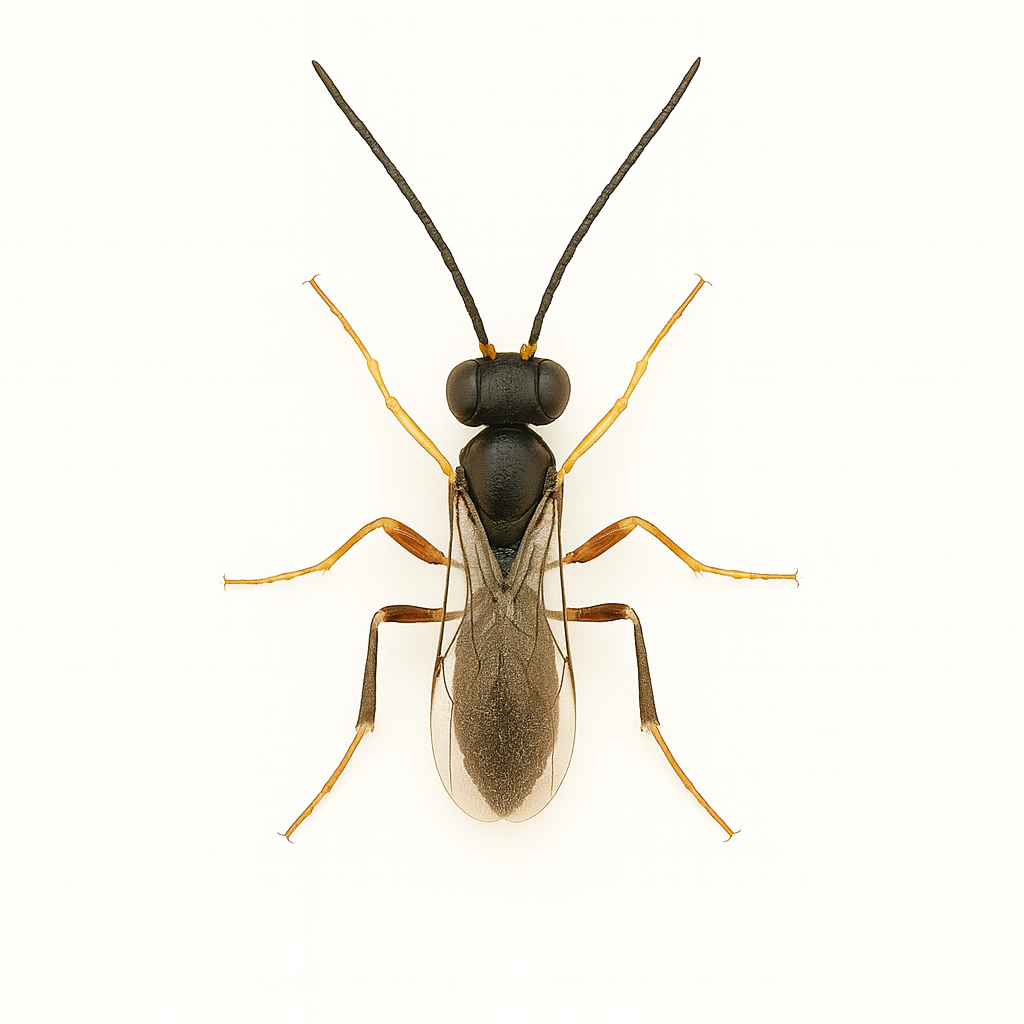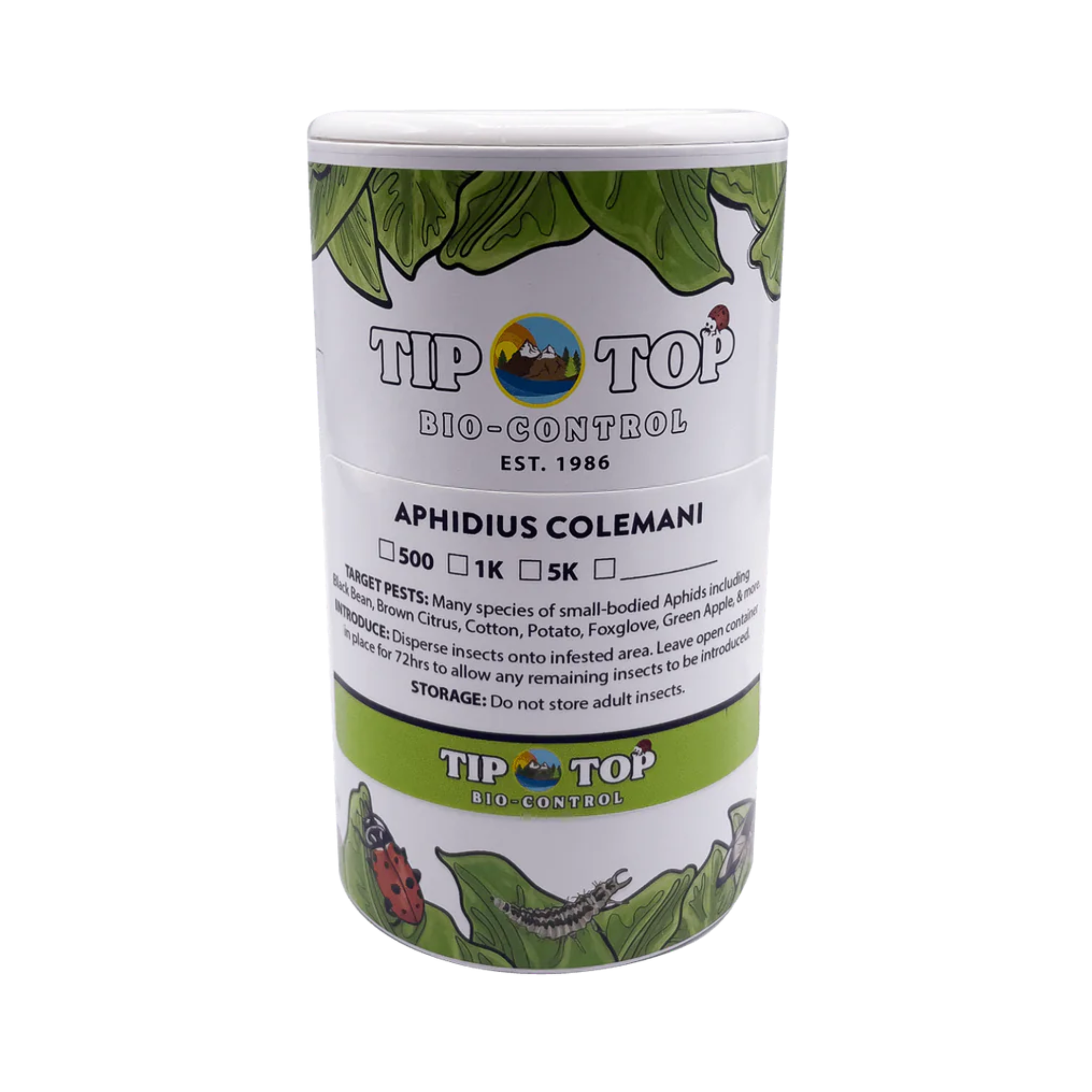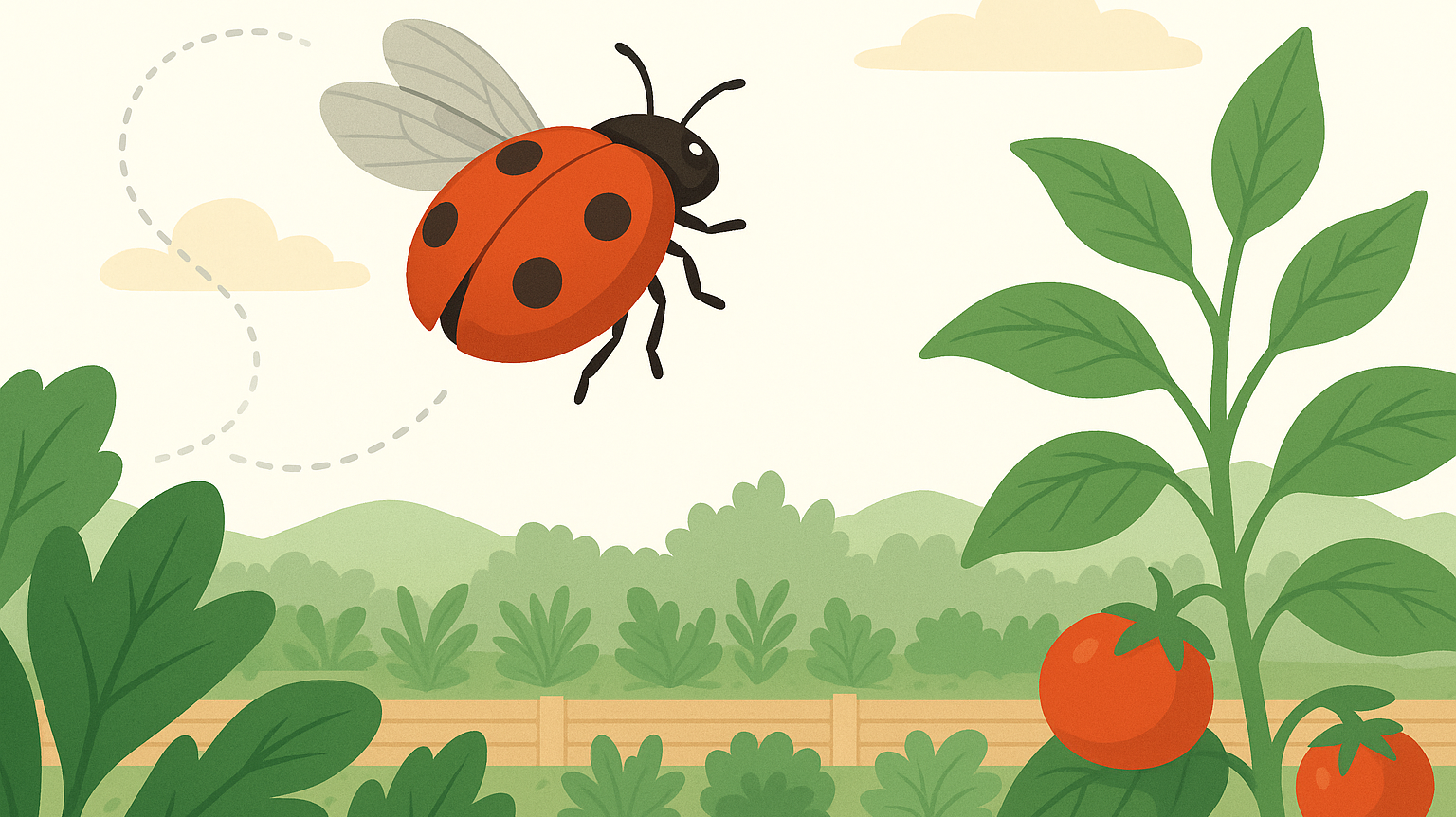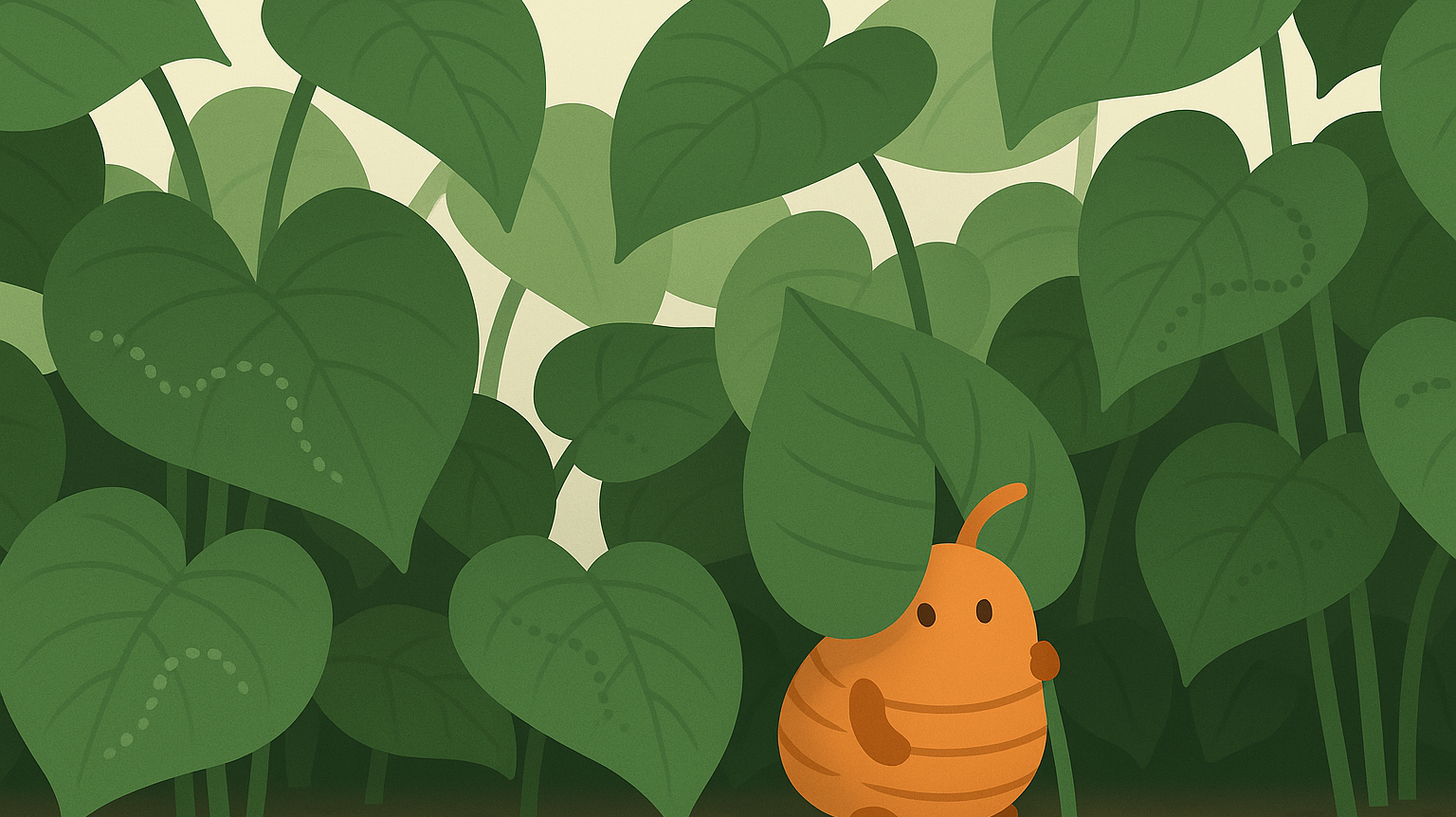Green Peach Aphids? Melon Aphids? This Wasp Has a Plan.
If you’ve already ID’d the culprit—green peach, melon, black bean, or lettuce aphids—then you don’t need another spray cycle. You need a predator that can find what you miss, and multiply while doing it.
Aphidius colemani is a specialist parasitoid wasp that targets small-bodied aphids. Each female injects one egg per aphid. Days later, you’ll start seeing swollen, tan-colored aphid mummies—evidence that the next generation is already working.
This isn’t passive prevention. It’s live, tactical suppression with zero residue and built-in reinforcement.
Aphidius colemani (Live Adult Wasps)
Specialist Biological Control for Green Peach, Melon, and Other Small Aphids
Each bottle contains live adult A. colemani wasps, ready to parasitize aphids as soon as they’re released. These wasps don't eat aphids. They use them to make more wasps.
Once established, they offer consistent, targeted pressure without sprays, re-entry windows, or chemical resistance.
Best For:
-
Green peach aphid (Myzus persicae)
-
Melon and cotton aphid (Aphis gossypii)
-
Black bean, lettuce, and apple aphids
-
High-turnover greenhouse or tent crops
-
Growers needing control with no surface impact or phytotoxicity
Note: A. colemani is not ideal for large-bodied aphids like Macrosiphum. For mixed infestations, pair with Aphidoletes aphidimyza or ladybugs.
What They Target
| Aphid Species | Controlled |
|---|---|
| Green peach aphid (Myzus persicae) | Yes |
| Melon/cotton aphid (Aphis gossypii) | Yes |
| Black bean aphid (Aphis fabae) | Yes |
| Lettuce aphid (Nasonovia ribisnigri) | Yes |
| Apple aphid (Aphis pomi) | Yes |
| Other small-bodied aphids (40+ spp.) | Yes |
| Large-bodied aphids (Macrosiphum, etc.) | No – pair with other predators |
How They Work
| Step | Timing |
|---|---|
| Female wasp lays egg in aphid | On release |
| Egg hatches | 3–5 days |
| Aphid turns into a tan mummy | 5–10 days after parasitism |
| Adult wasp emerges | ~14 days total |
| Population decline visible | Within 7–10 days |
Mummified aphids = it’s working. Releasing weekly = it keeps working.
How Much to Use
| Setting | Infestation | Release Rate |
|---|---|---|
| Grow tent (2×4 ft) | Light | 5–10 wasps |
| Garden bed (100 sq ft) | Moderate | 10–50 wasps per 10 sq ft |
| Greenhouse or field crops | Heavy | 1,000–5,000 per acre |
Repeat weekly for 2–3 weeks, or until suppression is clearly underway.
Environmental Conditions
-
Temperature: 64–81°F ideal
-
Humidity: Moderate to high preferred
-
Light exposure: Avoid direct sun on release—shade or canopy is best
-
Wind: Low airflow zones improve survival in field applications
Pro Tips
-
Start early. These work best before populations explode.
-
Don’t spray. Even soft sprays will kill your wasps.
-
Look for mummies. Tan, bloated aphids mean it’s working.
-
Reapply weekly if pest pressure is high or persistent.
-
Pair with Aphidoletes aphidimyza or ladybugs for mixed or large-bodied aphids.
-
If releasing outdoors, do so under plant cover and in early morning or evening.
Shipping & Storage
-
Ships overnight with live delivery guarantee
-
Use immediately on arrival
-
If needed, store at 39–46°F for up to 48 hours
-
Do not freeze or expose to heat or light
What You’ll Notice
-
A shift from active clusters to stalled colonies
-
The appearance of tan mummies in ~7 days
-
A drop in sticky residue and aphid excretion
-
Healthy new growth returning
-
No visible wasps (they’re small and focused)
You don’t need to see them. You’ll see the results.
FAQ
How does the Live Guarantee work?
We know how important it is for your mites to arrive healthy and ready to work. That’s why we offer a live arrival guarantee—with flexible options depending on when we hear from you:
- Let us know within 24 hours of delivery: We’ll gladly send a free replacement shipment.
- Let us know within 2–3 days of delivery: We can offer store credit to make things right.
- After 3 days from delivery: Because these are living organisms, we’re not able to offer replacements or credit beyond that window. By then, it’s harder to know what went wrong or whether shipping conditions were a factor.
We truly want your mites to succeed—so please open your package as soon as it arrives and check on them. If something doesn’t look right, don’t wait—reach out and we’ll take care of you.
Where are you located?
We have a number of different locations in NJ, Maine and Oregon. While we'd love to have you, we are not currently open to the public.
Can I call you?
We get it. Sometimes it's easier to talk to someone, and on a case by case basis we can try to figure it out. Unfortunately though, we're really not able to take calls—FGMN is a small nursery, and we're usually elbows-deep in plants or packing boxes. To make sure nothing gets missed (and everyone gets a timely reply), we keep all communication in writing.
Feel free to message us at info@fgmnnursery.com. We mostly respond quickly, but every once in awhile replies may take a day. Do follow-up if you don't hear in that time. We're human, we miss an email here or there.
Too Many Options?
We get it. Try our mite/insect matchmaking quiz and instantly get matched to the solutions you may need.
Our Live Delivery Guarantee
We stand behind every leaf and every mite. If your plant or predatory insects don’t arrive alive on the first delivery attempt, we’ll make it right.
Here’s what you need to know:
- Email us at info@fgmnnursery.com within 24 hours of delivery
- Include clear photos of the item and the shipping label
- Someone must be available to receive the package—plants and bugs don’t do well sitting in the sun, a mailbox, or the back of a delivery truck
For plants, we offer store credit if something goes wrong.
For predatory mites and beneficial insects, you’ll have the choice of a replacement shipment or store credit.
If you contact us after the 24-hour window, we may still be able to help—just know it’s handled case by case.
We pack with care, insulate when needed, and check the weather before shipping. But once it’s in transit, the fastest way to protect your order is to open it right away.
Mite Matters
The Hidden Weather That Shapes Plant and Predator Life
Invisible weather shapes every growing space. Warm air pools under lights, cool air settles near the floor, and in between, tiny predators decide where they’ll thrive. Learn how microclimates influence the balance between plants, pests, and the mites that keep them in check.
If Ladybugs Are Just Going to Fly Away, Why Use Them?
Most ladybugs don’t fly off out of spite — they leave when the environment isn’t right. Learn how temperature, humidity, and shelter affect whether they settle or scatter, and how to create the ideal setup that keeps them working where you need them most.
Where Did My Predatory Mites Go?
Released predatory mites but can’t see them anymore? Don’t panic. Their invisibility is exactly what makes them effective. Learn why they vanish, how they hunt pests out of sight, and why reapplying keeps your plants protected.







